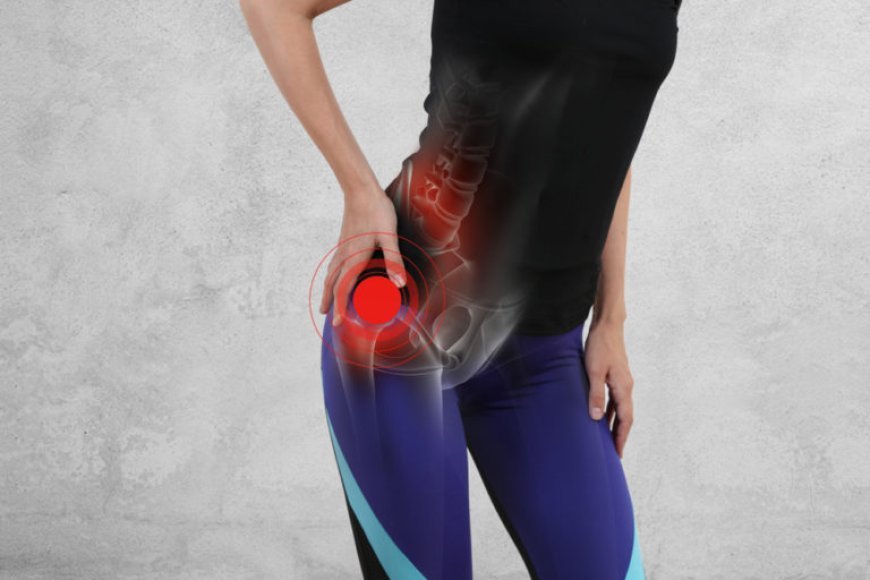What Causes Pain In Hip
Hip pain can be a debilitating condition that significantly affects a person's mobility and overall quality of life.

Hip pain can be a debilitating condition that significantly affects a person's mobility and overall quality of life.
Understanding the underlying causes of hip pain is crucial for effective diagnosis and treatment. In this comprehensive guide, we will explore the various factors that can lead to hip pain, ranging from common injuries to chronic conditions.
Muscular Strains and Ligament Sprains:
One of the most common causes of hip pain is muscular strains and ligament sprains. These injuries often occur due to overuse, improper stretching, or sudden movements that strain the muscles and ligaments around the hip joint. Athletes and individuals engaged in physically demanding activities are particularly susceptible to these types of injuries.
Tendinitis:
Tendinitis, or inflammation of the tendons, can cause hip pain. Tendons are thick cords that connect muscles to bones, and when they become inflamed, usually due to repetitive movements or injuries, they can result in localized pain and discomfort in the hip area.
Arthritis:
Arthritis, especially osteoarthritis, is a common cause of hip pain, particularly in older adults. Osteoarthritis occurs when the cartilage that cushions the joints wears down over time, leading to pain, swelling, and stiffness. In the case of the hip joint, this condition can cause significant discomfort and limit the range of motion.
Hip Labral Tears:
The hip labrum is a ring of cartilage that surrounds the hip socket, providing stability and cushioning to the joint. Tears in the hip labrum can occur due to injury, structural abnormalities, or repetitive motions. Labral tears often cause sharp or aching pain in the hip, especially during certain activities or movements.
Hip Impingement:
Hip impingement, also known as femoroacetabular impingement (FAI), is a condition where there is abnormal contact between the hip ball and socket. This can result in pain and limited movement, especially during activities that involve flexing the hip, such as sitting for extended periods or performing deep squats.
Bursitis:
Bursae are small, fluid-filled sacs that cushion and lubricate joints. In the hip, inflammation of the bursae, known as hip bursitis, can lead to pain and tenderness. Bursitis is often caused by repetitive activities, prolonged sitting on hard surfaces, or direct trauma to the hip area.
Fractures:
Hip fractures, particularly in the elderly population, are a serious cause of hip pain. Fractures can result from falls, accidents, or weakened bones due to conditions like osteoporosis. Hip fractures require immediate medical attention and often involve surgical intervention for proper healing.
Nerve Compression:
Conditions such as sciatica, where the sciatic nerve is compressed or irritated, can cause radiating pain from the lower back down to the hip and leg. Nerve compression can result from herniated discs, spinal stenosis, or other spinal abnormalities, leading to hip pain and discomfort.
Infections and Diseases:
Infections in the hip joint, such as septic arthritis, or systemic diseases like lupus and certain types of cancers, can cause hip pain. These conditions require prompt medical evaluation and treatment to manage the underlying cause of the pain effectively.
Referred Pain:
Sometimes, hip pain may not originate from the hip joint itself but may be referred from nearby structures such as the lower back or pelvis. Conditions like herniated discs or kidney stones can cause referred pain to the hip area, making it challenging to diagnose the exact source of the discomfort.
Hip pain can result from a myriad of causes, including muscular strains, ligament sprains, tendinitis, arthritis, hip labral tears, hip impingement, bursitis, fractures, nerve compression, infections, diseases, and referred pain from other areas of the body. Proper diagnosis by a healthcare professional is essential to determine the specific cause of hip pain and develop an appropriate treatment plan, which may include rest, physical therapy, medications, injections, or, in severe cases, surgical intervention. Early intervention and management can significantly improve the quality of life for individuals experiencing hip pain, restoring mobility and reducing discomfort.
